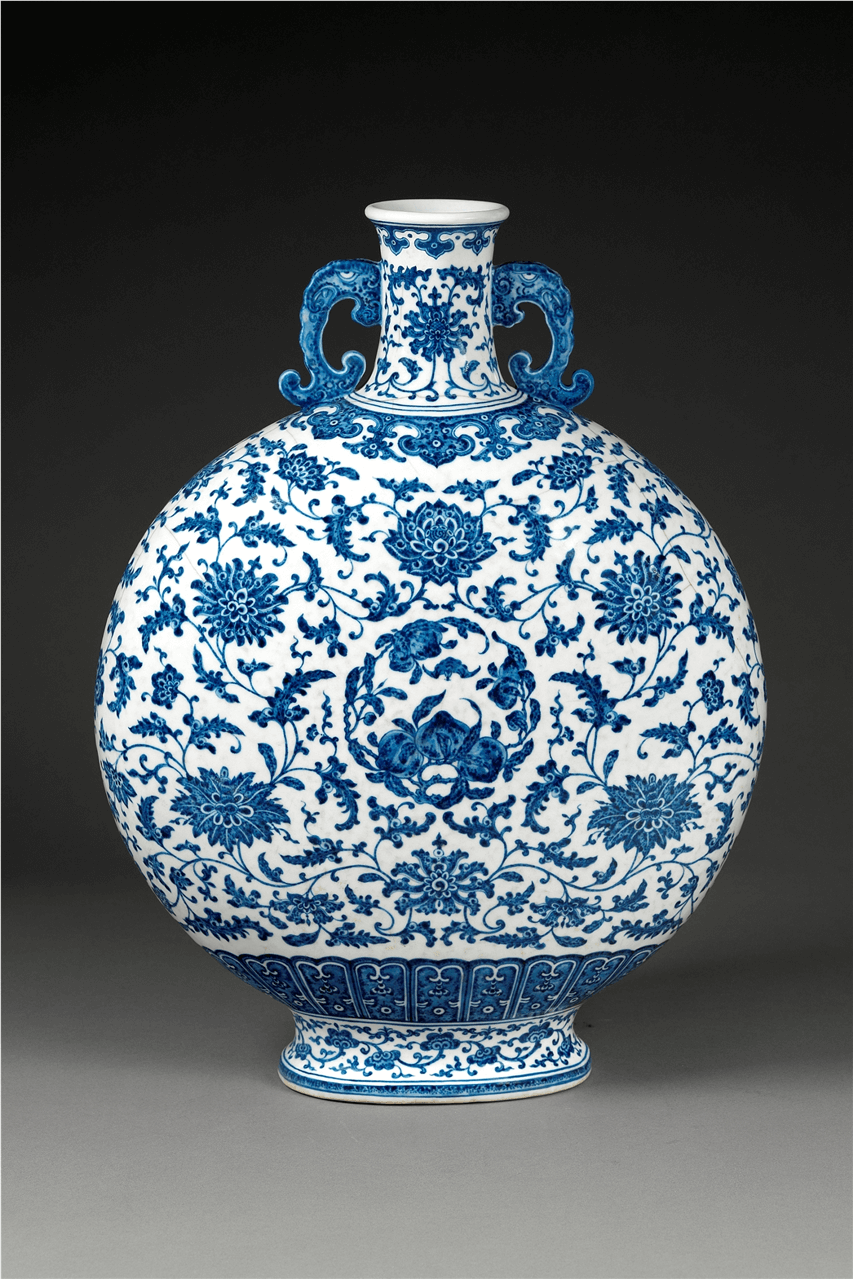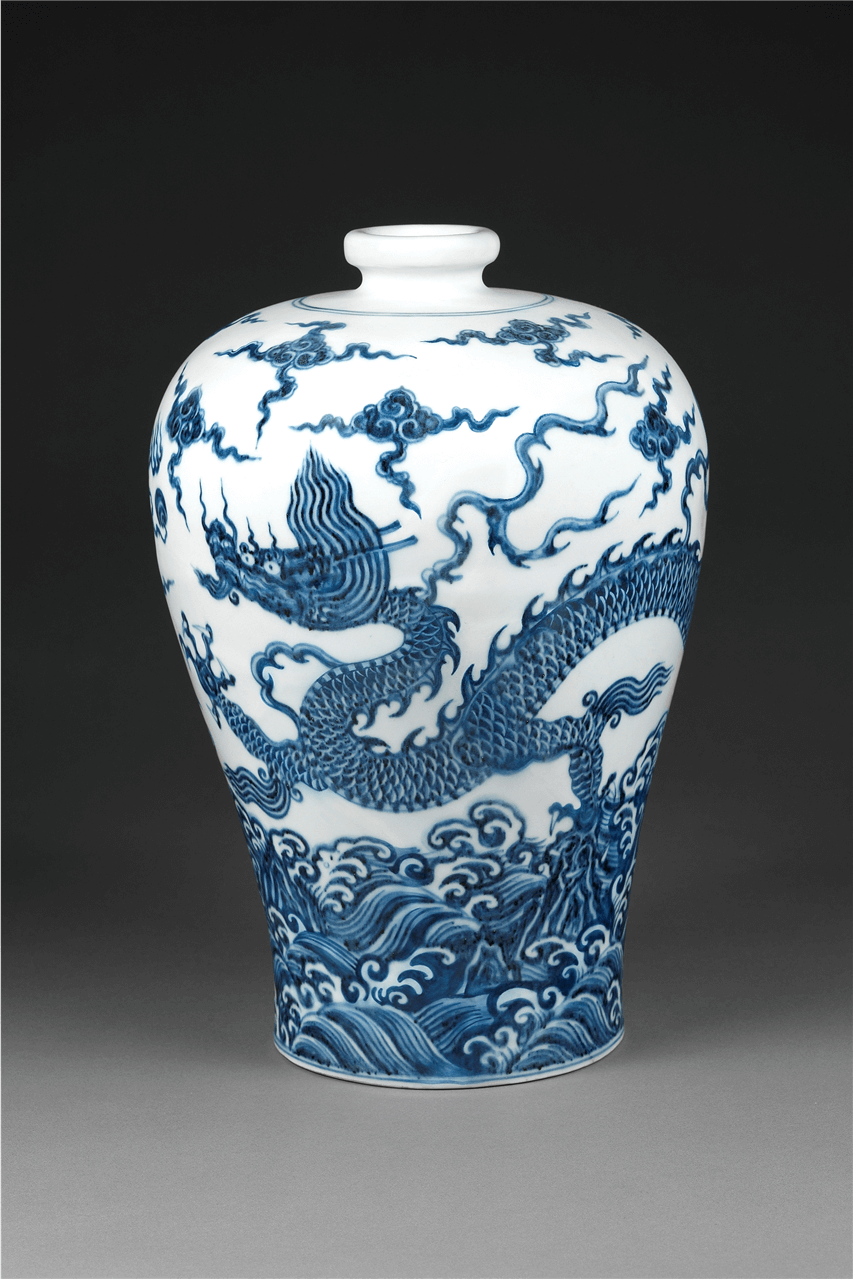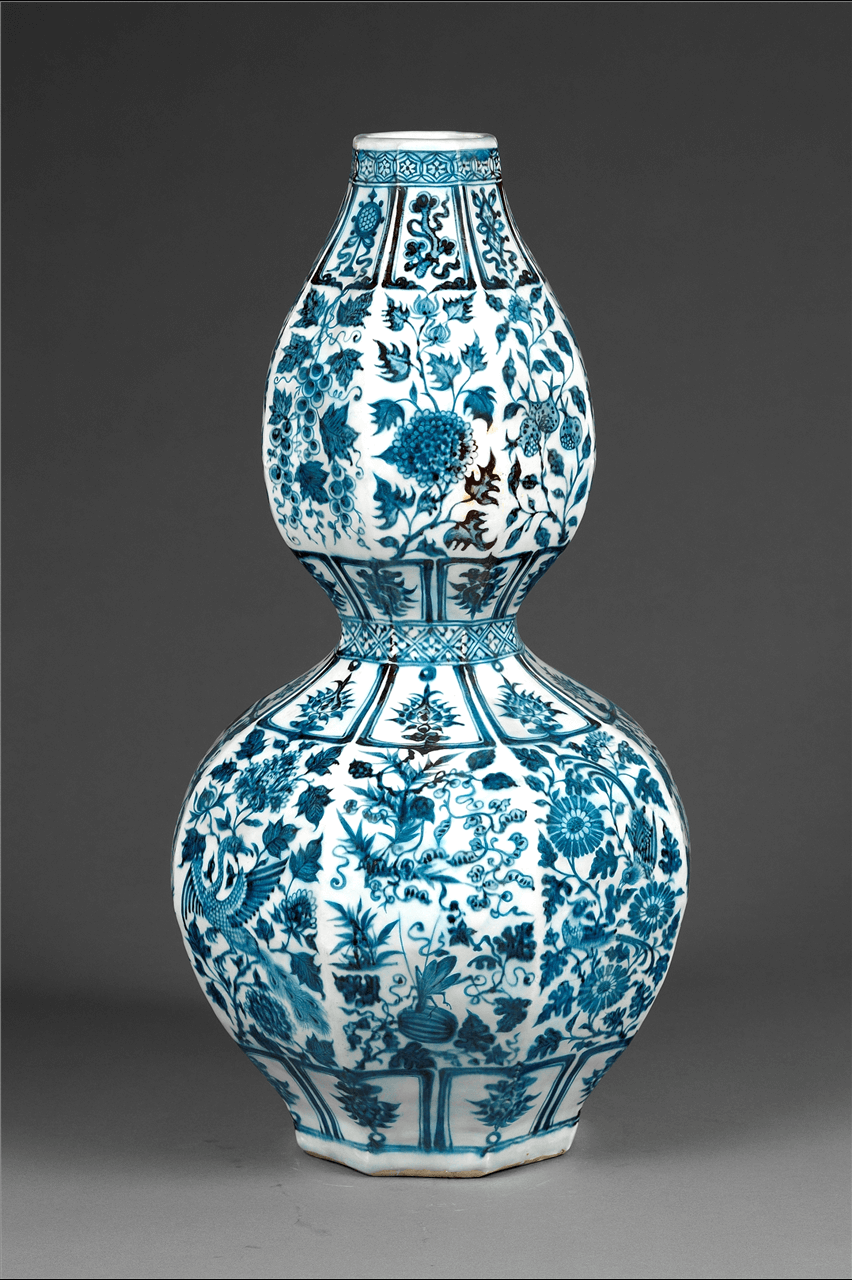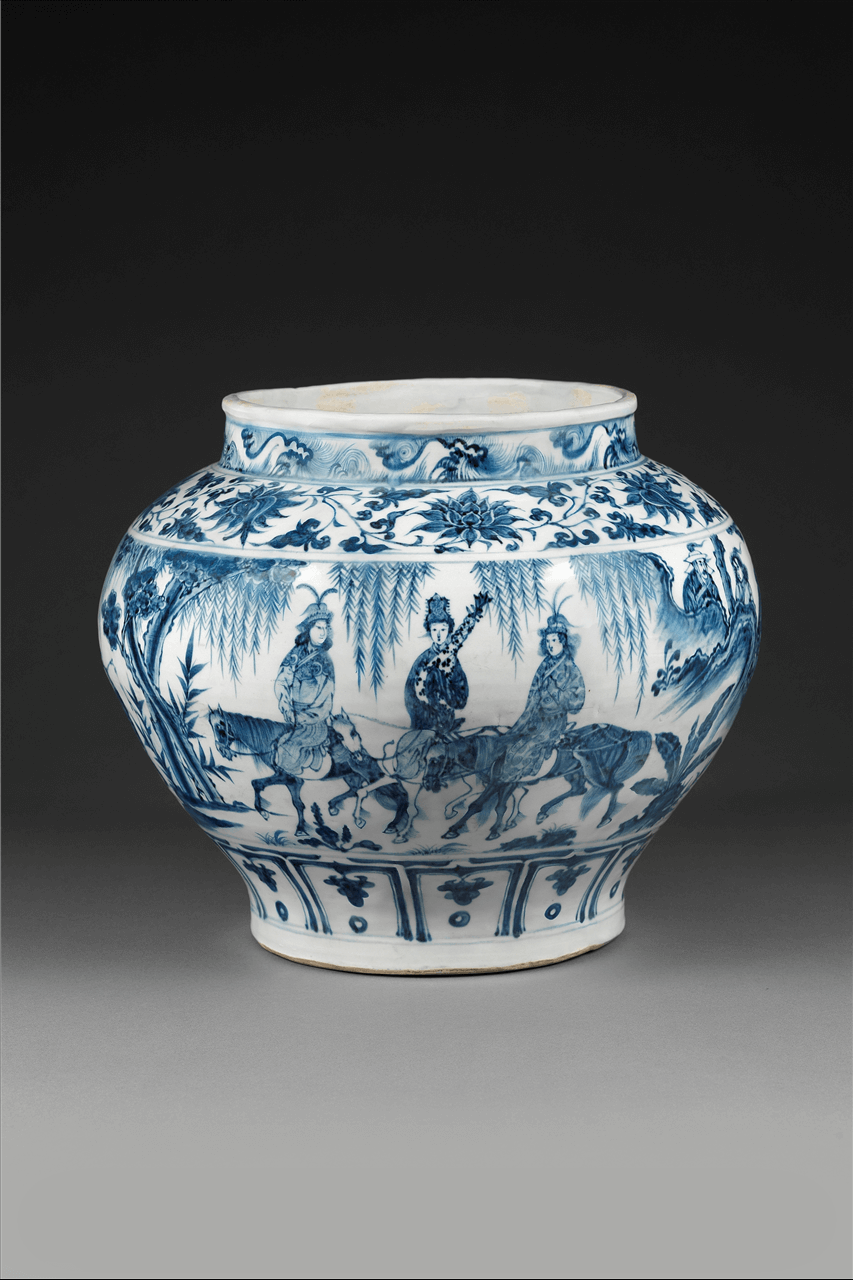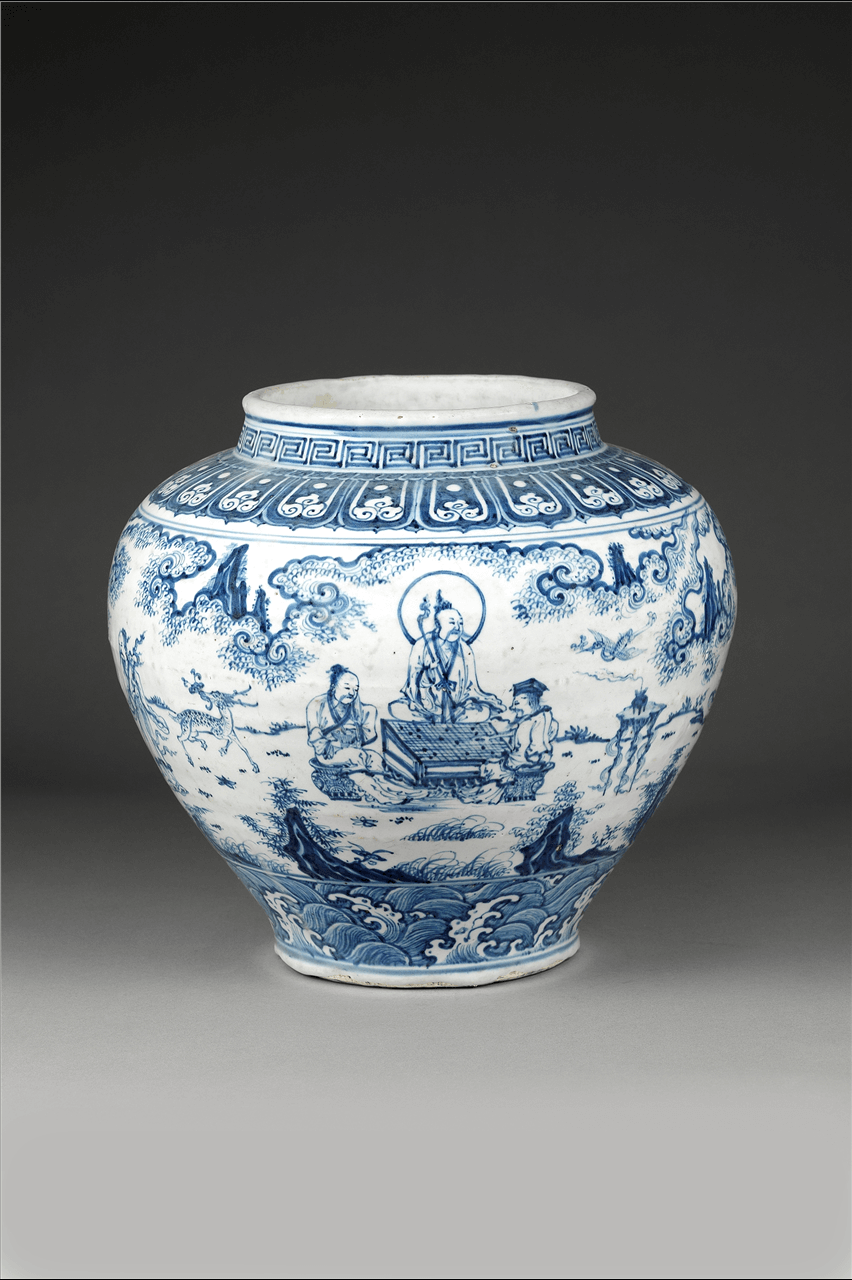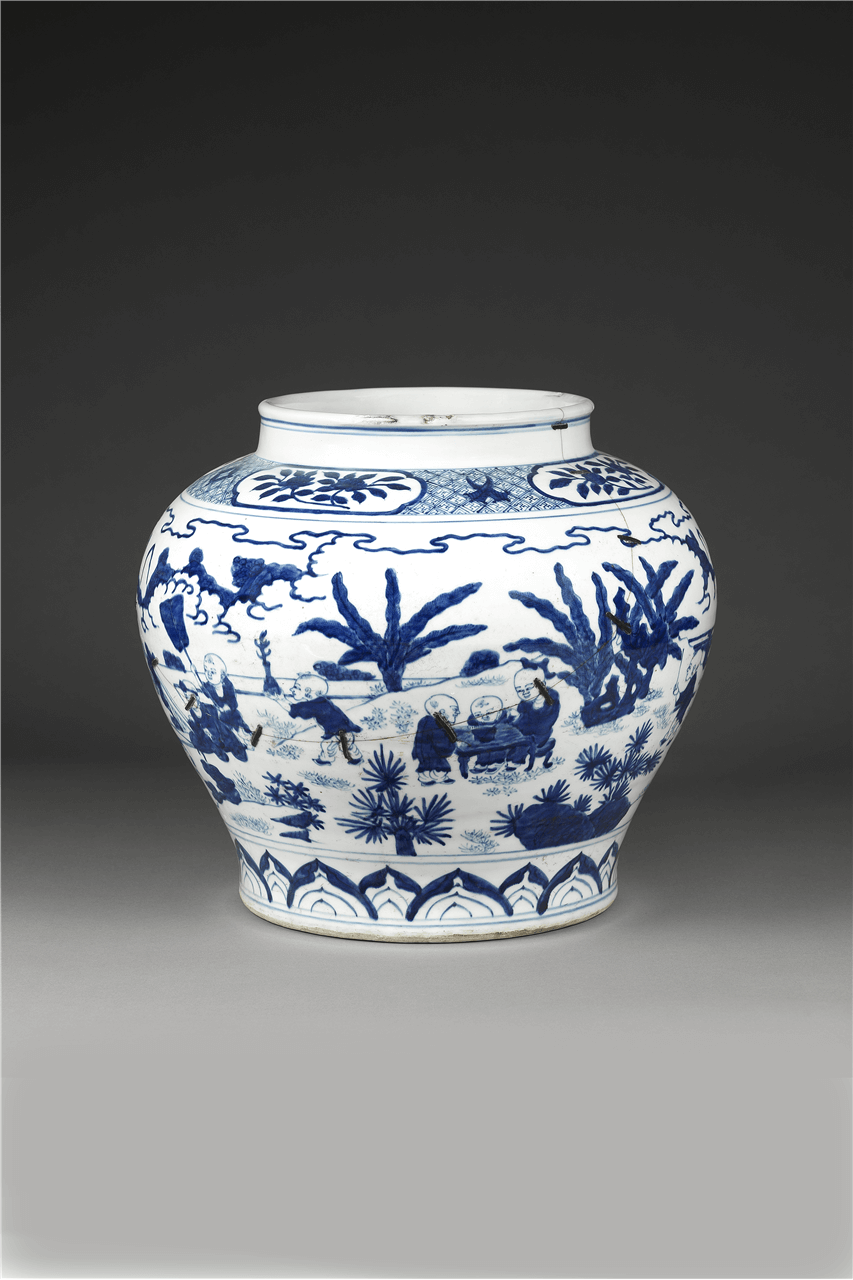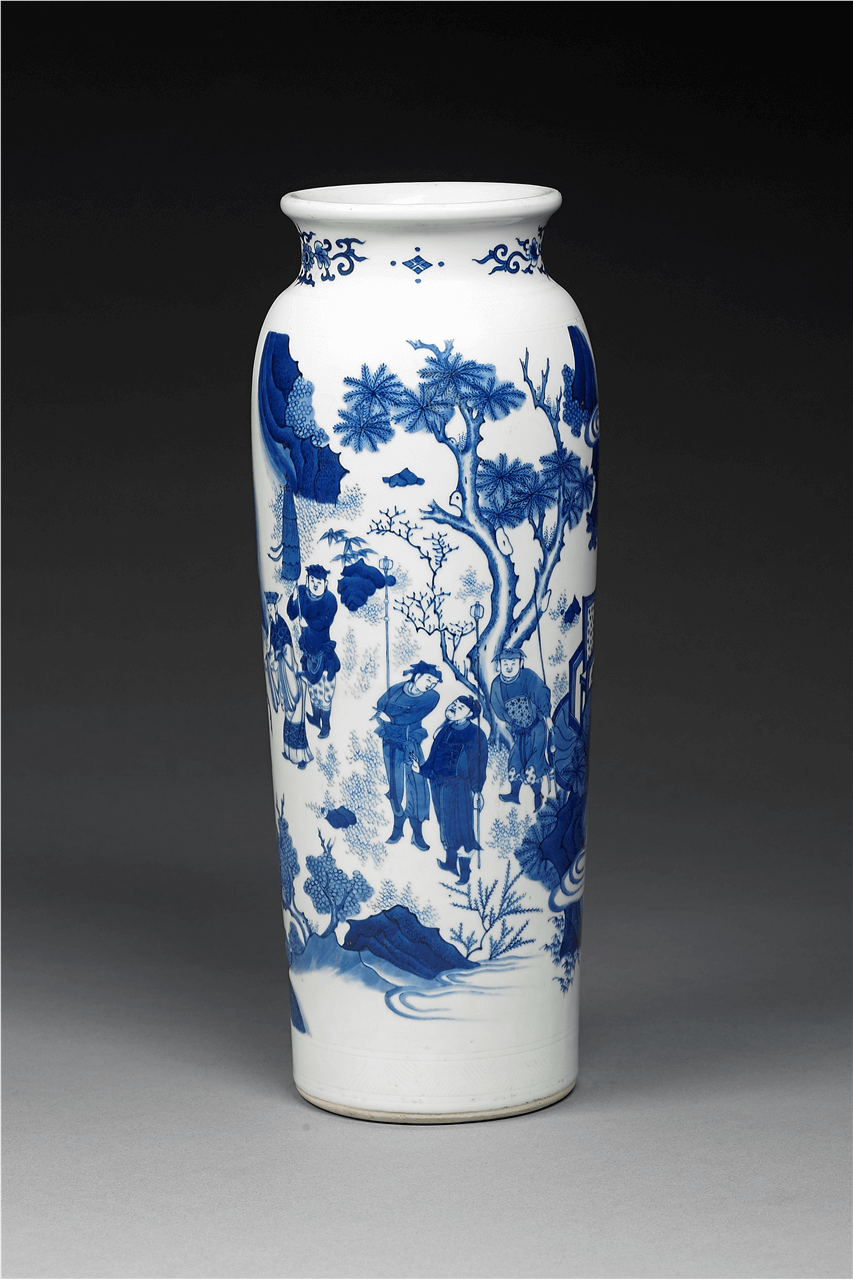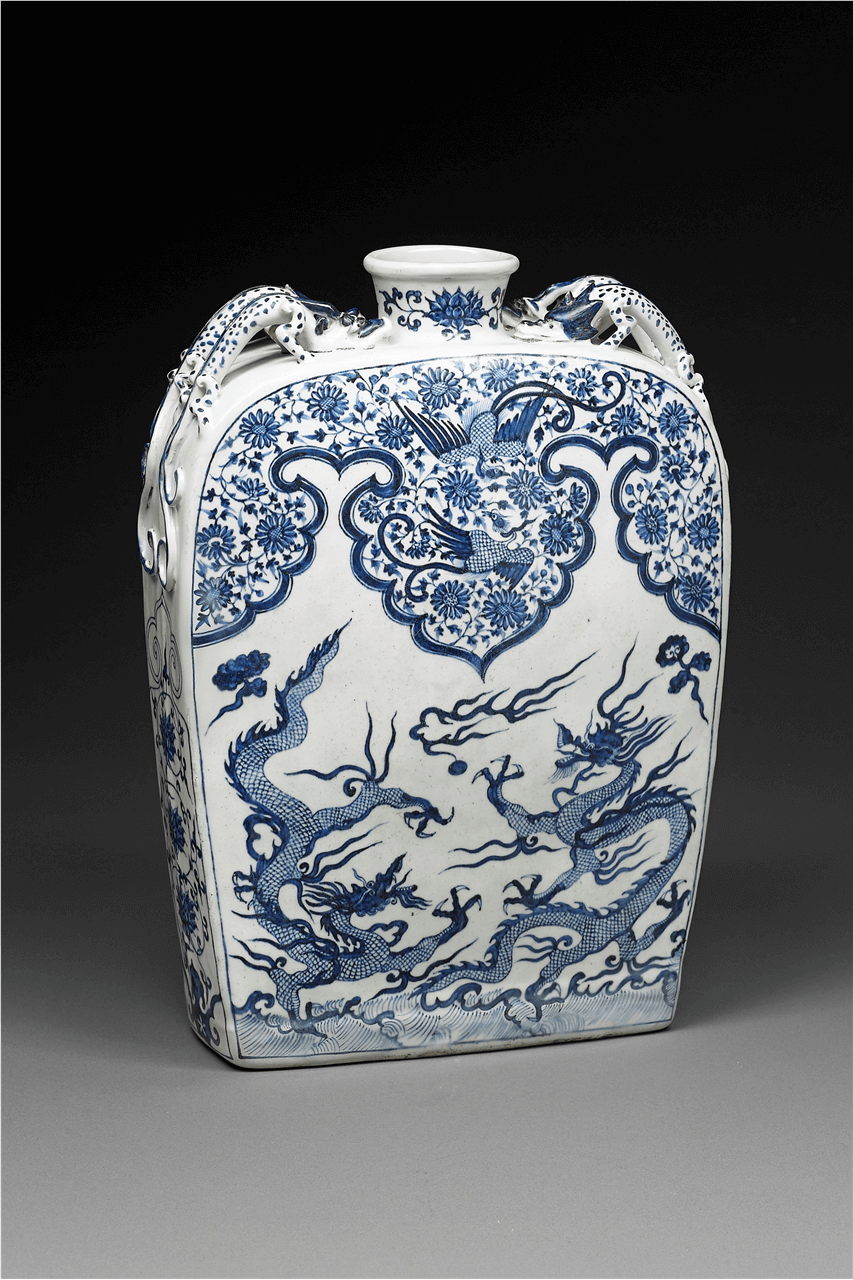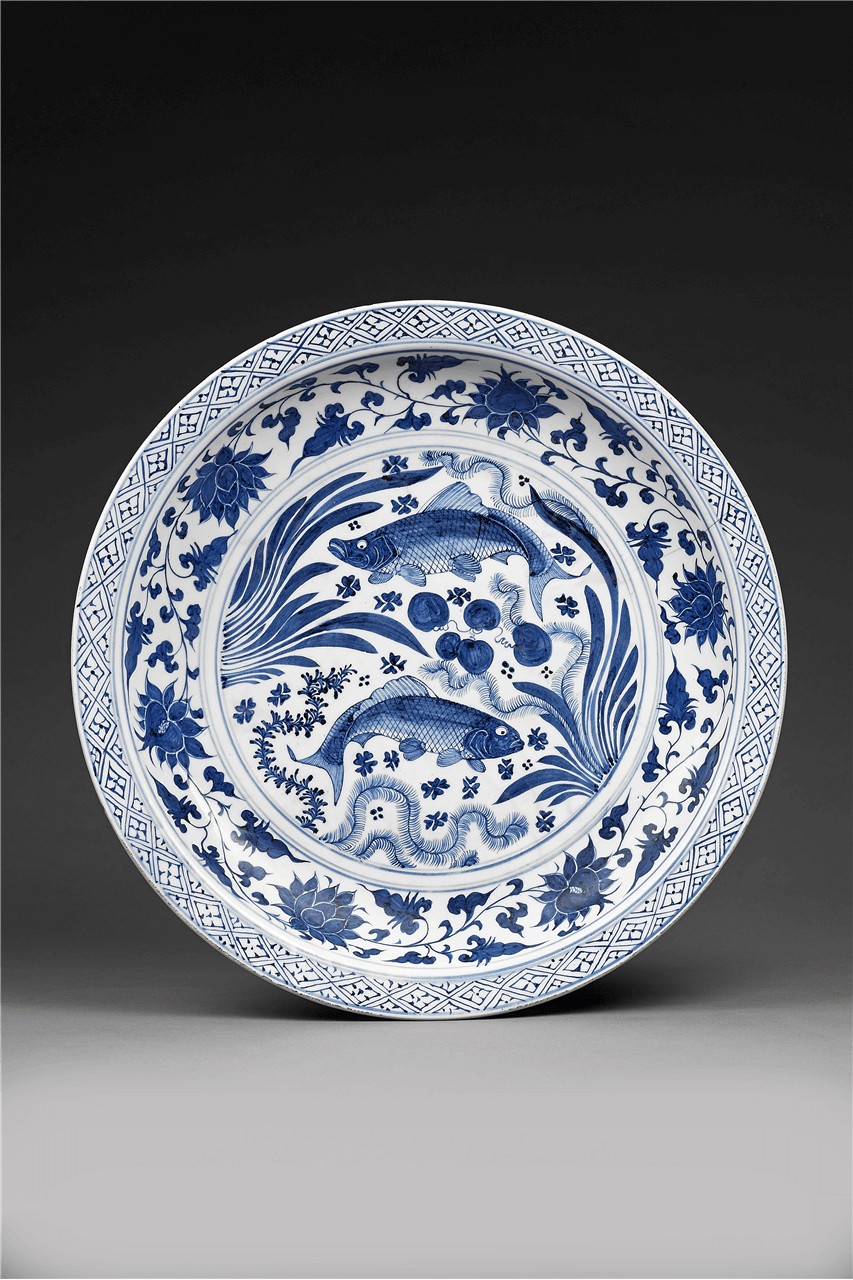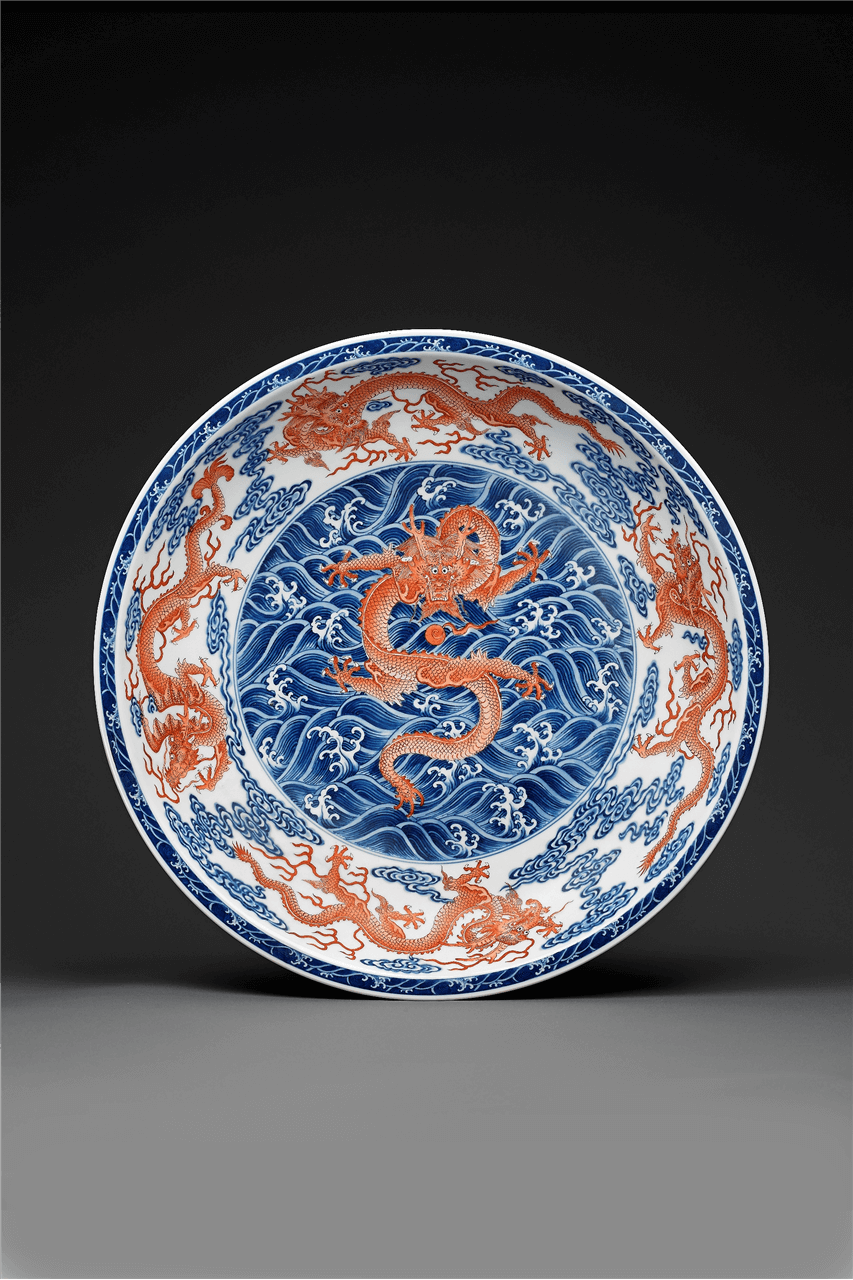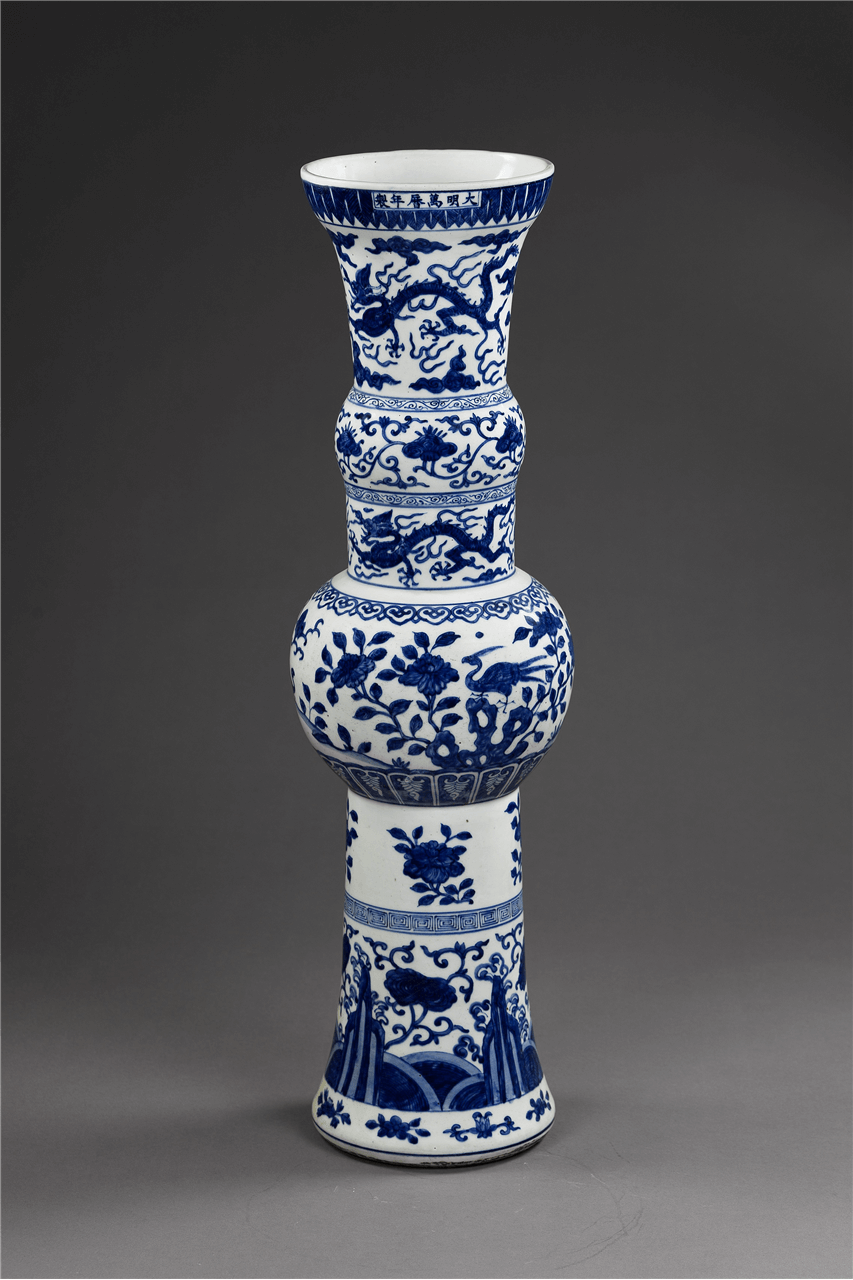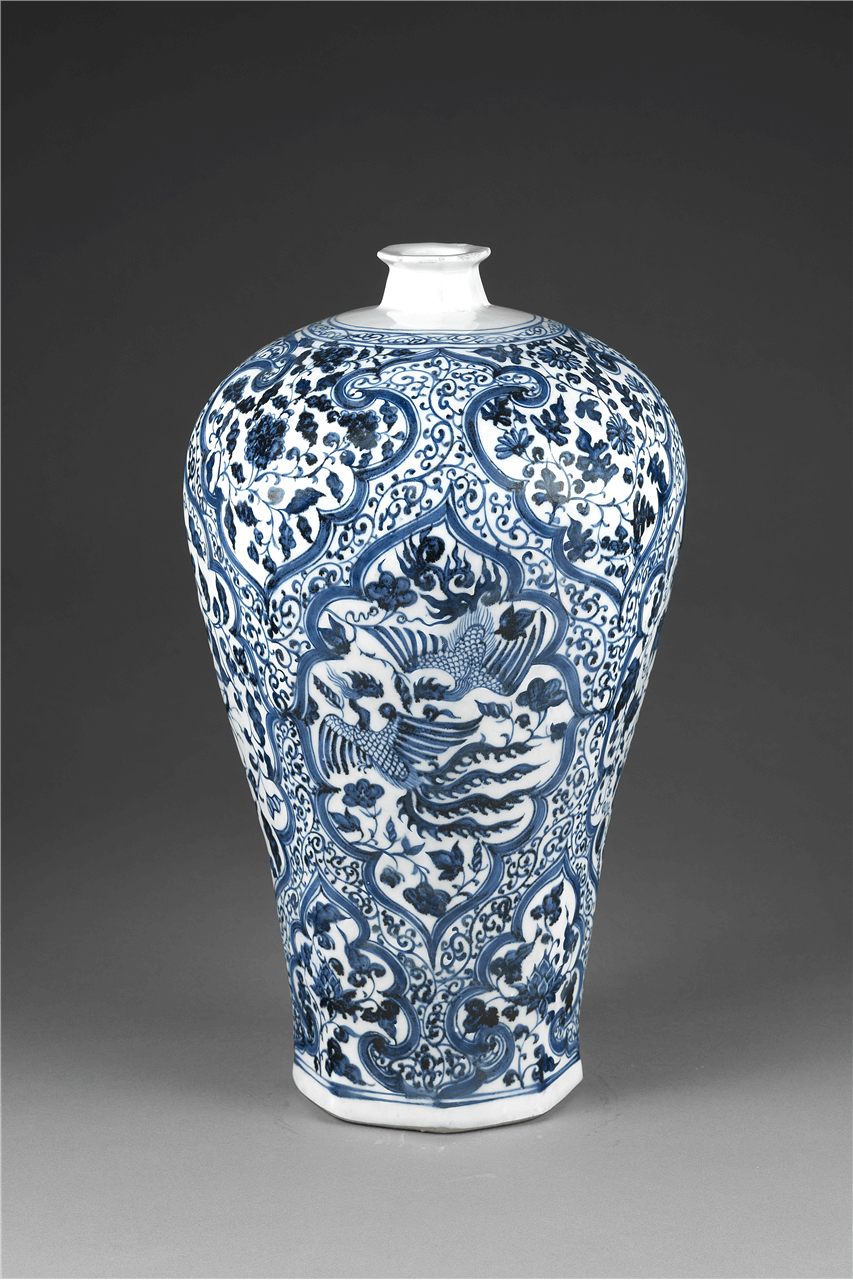Blue-and-white Porcelains
Blue and white porcelain is created by painting patterns with cobalt pigment on white clay bodies, covering with transparent glaze, and firing at high temperature. Its origins can be traced to the Tang dynasty, maturing in the Jingdezhen area during the mid-late Yuan dynasty. Through continuous development in the Ming and Qing dynasties, it became widely used across all social classes and an extremely important category in Chinese ceramic history. These porcelains were also exported to Europe, Asia, and Africa via trade routes, gaining worldwide appreciation. The museum's collection includes pieces from the Yuan, Ming, and Qing dynasties, featuring both export wares and imperial pieces, as well as folk kiln products, showcasing representative shapes and patterns that demonstrate the development and historical trajectory of blue and white porcelain over 600 years since the Yuan dynasty.
